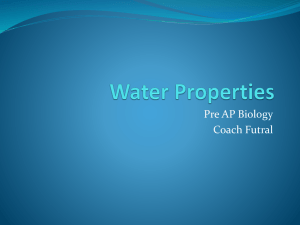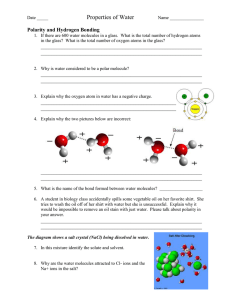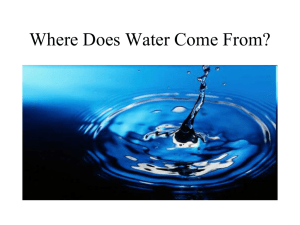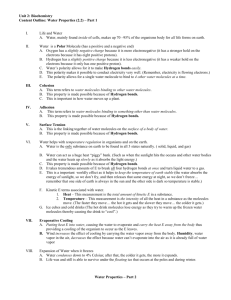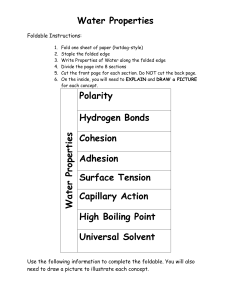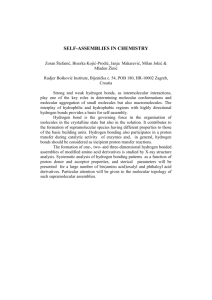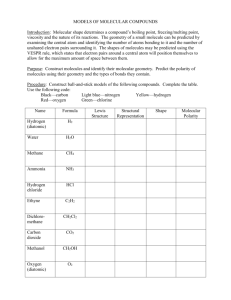Potential command term assessment statements Topic 2: Molecular
advertisement
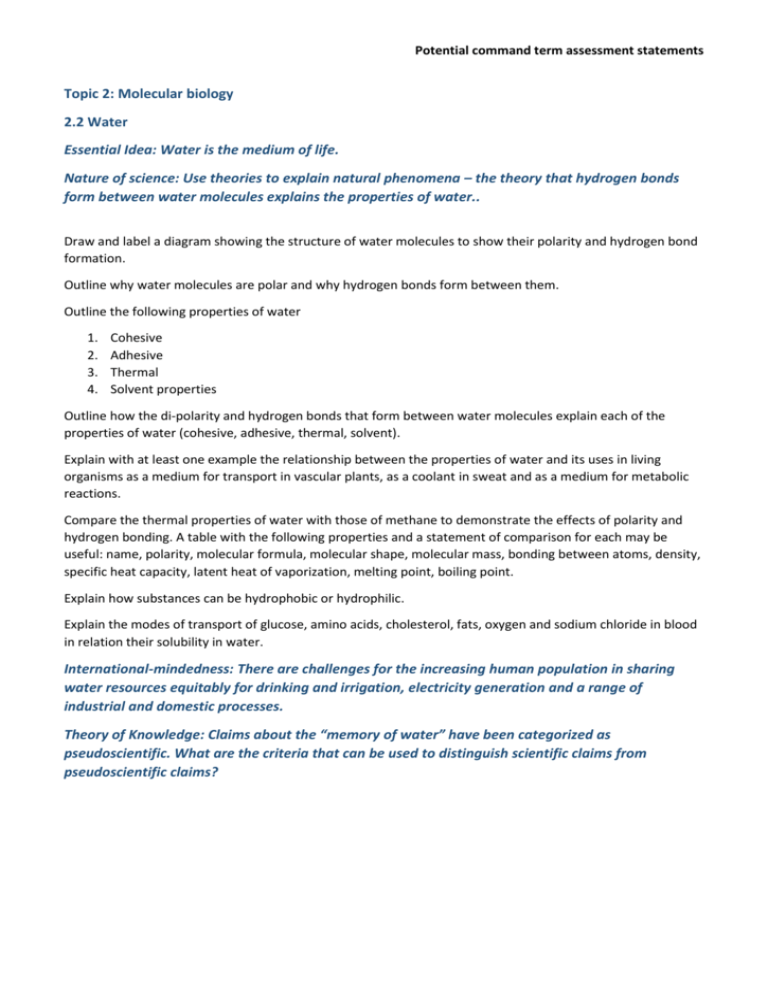
Potential command term assessment statements Topic 2: Molecular biology 2.2 Water Essential Idea: Water is the medium of life. Nature of science: Use theories to explain natural phenomena – the theory that hydrogen bonds form between water molecules explains the properties of water.. Draw and label a diagram showing the structure of water molecules to show their polarity and hydrogen bond formation. Outline why water molecules are polar and why hydrogen bonds form between them. Outline the following properties of water 1. 2. 3. 4. Cohesive Adhesive Thermal Solvent properties Outline how the di-polarity and hydrogen bonds that form between water molecules explain each of the properties of water (cohesive, adhesive, thermal, solvent). Explain with at least one example the relationship between the properties of water and its uses in living organisms as a medium for transport in vascular plants, as a coolant in sweat and as a medium for metabolic reactions. Compare the thermal properties of water with those of methane to demonstrate the effects of polarity and hydrogen bonding. A table with the following properties and a statement of comparison for each may be useful: name, polarity, molecular formula, molecular shape, molecular mass, bonding between atoms, density, specific heat capacity, latent heat of vaporization, melting point, boiling point. Explain how substances can be hydrophobic or hydrophilic. Explain the modes of transport of glucose, amino acids, cholesterol, fats, oxygen and sodium chloride in blood in relation their solubility in water. International-mindedness: There are challenges for the increasing human population in sharing water resources equitably for drinking and irrigation, electricity generation and a range of industrial and domestic processes. Theory of Knowledge: Claims about the “memory of water” have been categorized as pseudoscientific. What are the criteria that can be used to distinguish scientific claims from pseudoscientific claims?


